– So my name is John Eckhardt, and welcome to the 2017, Wisconsin Entrepreneurship Showcase. Tonight we have an opportunity to learn, from some amazing entrepreneurs for Wisconsin’s finest. Every single one of them, at some point in their life, had to stop and make a bet on themselves, and a very scary moment. And what they made a bet to do, is not only bet on themselves, to create a company that maybe nobody else would, believe in them. But they also at the same time, were making a bet that they could come up with a new product or service, that could help improve the society that we live in. Tonight the four people that we’re gonna hear from, are as follows, Zack Halmstad, whose student startup at U.W. Eau-Claire, has grown to be something absolutely, phenomenally large and amazing. Al Kubicek, Alex Kubicek, who is building, a weather measurement company here in Madison, which is absolutely incredible. Kristen Berman who’s using behavioral science, to work on her start up and her endeavors. And Brian Wiegand, who’s been here in Madison, Wisconsin, quietly building and selling startup companies, over the last 20 years, including selling one to Microsoft. I’ve asked each of the speakers to come on stage, and boil down their careers into only 14 minutes each. That’s all they got. They’re gonna tell ustheir story and share, with us some insights from their careers. Please join me in welcoming our first speaker, Zach Halmstad to the stage.
(applause)
– Thank you, thank you John. Good evening everyone, and thank you for being here tonight. As John said, my name’s Zach Halmstad. I’m actually a music major from, University of Wisconsin Eau-Claire. I founded a company named Jamf while I was in school there. I founded it at, like my fifth senior year. Today we employ over seven hundred people around the world. So, I’m gonna take a little bit of time tonight, to kinda tell you guys my story, all the different things that I went through, as an entrepreneur, and also try and answer, some of the questions that I most frequently get asked. My path actually started my sophomore year of college, when the Blimpie’s that I worked at shut down. And I needed to find a job. I went around the city of Eau-Claire, and I put in my resume which had nothing on it, other than my name and phone number at that point. I brought it to every computer place in town. So if they were doing web design or computer repair, I dropped my resume off, and after about a month of that, I didn’t get a single call back. Walking through the campus at UWEC, I actually stumbled across a job posting, for the I.T. department,it was called CNS. And it was doing Mac management, for faculty computers on campus. Got the interview, was able to answer, the one technical question for the job correctly, and got the job.
And had an incredible experience as a student employee, on that campus. I can’t stress how much I was able to learn working in that. It was like I was working in the real world, but as a student I had all these responsibilities that, I don’t think someone my age would’ve gotten, outside of the university. It was such a great environment for me to learn in. And, two years later when my boss moved on, to another job inside our organization, I actually got his job. And so I spent the next four years, working full time on campus. And my job was to make sure that all of the faculty computers, all the faculty Mac’s on campus were, up and running as best as possible. And my boss in that job, was absolutely incredible, in helping me understand the power of technology, when it relates to helping humans. And so our job was to get the technology, out of the way of humans. So the less the technology was actually, interfering with people’s learning or teaching, the better job that we were doing. In addition to my music major, I had a computer science minor. And I was able to use that a lot in my job. So, managing Mac’s back in 2002, there weren’t a lotof tools for it. And my coworkers on the Windows side, had all these incredible tools, that made their job really easy. They like never had to leave their desk, and I had to walk to every part of campus, anytime something went wrong. And, using my computer science minor, which was fairly minimal skill sets that I had for that, I was actually able to start building some tools, to help make my job easier.
About two years into my job, I decided, all right I don’t want to build these tools, just for the university anymore, ’cause I think they’re really useful for a lot of people. I know that there’s a lot of people that have, the same job as me and are struggling with these same problems. And went and talked to my boss, said all right I want to start a company. I still want to work here ’cause, I’m completely broke, and don’t have any money to start a company. But I want to actually go outside and, start developing software on my own. So, in 2002 we founded Jamf. I was still going to school full-time. I was working full time on campus. And, basically nights I spent in, coffee shops and bars working. And the weekends, I would spend the entire weekend, working on writing software for Jamf. We actually started that with 1800 dollars. That’s how much money we spent in the first year. We bought a computer. We paid for some web hosting. We bought a piece of software to help us develop. And we filed for our LLC in the state of Wisconsin. 1800 bucks was our startup cost, in that first year. During that time, we got a, handful of customers to come on. And by 2004 when I finally graduated, after eight years of college, I was able to finally leave my job at U.W. Eau-Claire, and focus full-time on Jamf.
So I spent an incredible amount of time, over the next two and half years traveling around the world, meeting customers, and every penny that we made at Jamf, we put back into the company. And a lot of that went to travel. We found that we were really successful, when we actually got face-to-face with people. But we really struggled when we were doing things, just over the phone. So it was a lot of travel in those days and zero paychecks. So I did a little consulting on the side, to pay rent and things like that. And after about two and a half years of that, by 2007, we’d actually created a board for Jamf. So we went out, we looked at the weaknesses, that two or three of us during that time had. And we said all right, what types of areas, do we actually need to get outside expertise on. We found a guy named Jim who was, our chairman of the board for about a decade. He’d had tons of experience in different businesses. Came on and gave us his incredible life history of, experience, that was incredibly useful for us. He’s one of the best mentors I’ve ever had. We found financial advice on our board. We had a CPA come and join our board. And the importance of this all, board was lost on me at that point. And we were very lucky to build this incredible board.
And it’s evolved over time, but through that entire time it’s not been people, who are just there to say yes to whatever we want to do. They’re there to challenge our ideas and make us better. And our board has been a huge part of our success. So as you’re looking at starting things, when you get to the spot of looking for a board, finding really good people that fill in your gaps, that don’t necessarily see the world, the same way that you do, is an incredibly powerful thing. Our board has been the biggest supporter of us over time. So about two and a half years after leaving the university, it was 2007, January, we had about 125 customers, around the world that were paying us. And that’s when we decided, that we’re actually gonna start hiring employees. People ask me a lot as an entrepreneur, what’s the scariest thing you’ve ever done. And for me it was really this time, when we started hiring people, and almost everyone that we hired our first two years, were friends and family, they were people that we knew. They were really close friends that were quitting great jobs that they have to come work for us. They were really good friends that were graduating, from the university that had a great job lined up, with international banks and turned those jobs down to come join us. Their parents made sure that I heard about that,
at their wedding. (audience laughing)
But this was really scary. Not because they weren’t awesome people, and they weren’t coming to do great things but, we had to pay them. They had mortgages that they were having for the first time. They were starting families. These people were having their first kids, and their first houses. We tried to protect them from what the bank account looked like, but on the first of every month it didn’t look very good. We made payroll every month. We had a line of credit that we’d dip into every once and a while. But this was a really scary time for me. I lost a lot of sleep. And this is where our board was really really helpful, to help us create what we called a balance scorecard. That meant that we tried to be profitable. Not because we wanted to get rich off it, because we wanted to have money in the bank, to pay people if we had a bad month. If we had a bad quarter, our first response wasn’t to start laying people off, but actually we were able to group together as a team and do that. That’s one of the hardest times that I went through at Jamf, was really this how do you actually make sure, that everyone’s getting paid, when they’re really close friends, that are leaving in a startup. So one of the things that’s maybe unique, for a lot of companies these days is, we were a bootstrap company. That means that we didn’t take any money from outside. We didn’t go and find a bunch of investors, to get millions and millions of dollars in the bank, before we started doing stuff. We were, at this point, five years in, of creating product, finding customers, and we still had no outside money. So every penny that we wanted to spend on people and travel, we had to actually earn, to be able to pay those bills.
A lot of people you’ll probably have talk of angel investors or venture capitalist, or private equity firms. There’s always different spots that those that come in and are very useful in starting a company. We didn’t have a great experience in the only one venture capitalist that we ever talked to. We walked in and they looked at what we were doing. And when we founded our company in 2002, that was Apple’s worst fiscal year, since 1982. It was the absolute wrong time in everyone’s eyes to be creating a company that was focused on nothing but Apple. And it was very smart of them to say, that’s not really a good idea. And they offered us one million dollars for 90% of our company. And we turned that down. Said, “Alright we think we can do this on our own.”
So we were heads down for a few more years. And through that time, we just continued to grow. We had this kind of 30-40% growth every year. We were finding that many more customers. Our products were providing that much more value. And we continued to hire people at that same rate. By 2011, we actually started branching out of Eau-Claire, Minneapolis for our offices. We opened an office in New York. We opened an office in Cupertino, which is where Apple is located out in Silicon Valley. And those offices were good for us for a lot of reasons. They’re still very small offices today. But we bring a lot of customers into them. We’ve got huge pockets of customers, both on the east coast and the west coast. And for them to be able to come and see our offices, and see our people has been a very useful thing for us.
Fast forward a couple years further, we opened our first international offices, in Amsterdam and Hong Kong in 2013. And 2013 was a big year for us. That was the first time that we went out and tried to raise capital. So we had made it 11 years, before we went to the outside world, and said it’s time to raise money. And we weren’t doing that because, we wererunning out of money. We were actually cash flowing really well. We were actually putting money in the bank. But we knew that we could do more, if we had a little bit more money. It that would allow us to be more aggressive with our hiring and our spending. But we had a lot of private equity firms that were coming to us. And private equity firms are a little different than venture firms. Venture capitalists tend to be much more risky in what they invest in, hoping that one of them makes it really big. Private equity firms tend to invest in existing growing businesses that have a business plan that’s working, that have a lot of year behind them and a track record. So we had a lot of private equity firms, that looked at us and how we were bootstrapped, and were impressed with what our company looked like. So for us, we thought that we were in a, very very lucky spot to know that the money was gonna be the easy part of this to actually get when we went out to do this raise.
But, I learned through this process that this is so important. We had two primary things that we wanted out of our partner that we would come in and raise money with. First was that they had to have access that we didn’t, into our world. And the second was that they had to have insights into what we do that we don’t have. We found amazing partners that have come in and joined our board and been incredible advisors. They’ve helped us so much in growing our organization. And, I think when you go out and look for capital, if it’s with a venture firm or private equity firm, or an angel, it’snot just the money, you should be looking at. Also, look at what else can they do to help you grow. The money’s one thing but the amount of things that they can do to help you and your company grow is incredible.
Last thing I’ll talk about with Jamf was one of the hardest things that we’ve ever done. It was actually hire an external CEO. So my friend Chip and I were co-CEO for a very long time. And we were in over our heads. The company was still doing fine. We were growing. We were profitable. But we knew that we were oneday ahead of the organization, and we were learning every single day to stay that one day ahead. We went out and we found an amazing hire that came in. His name is Dean. He’s been our CEO for about two and a half years now. Has really helped grow our organization, over the last few years.
One of the other thingsthat people ask me a lot is, what’s a piece of advice you have for people who want to be entrepreneurs. And kind of the clich answer to that, is find something that you’re passionate about. And people say that for all realms of life, like you’re going into work, when you’re going to school whatever that is. But it’s really actually very important to take that seriously. If you want to be an entrepreneur, one of the big things that you can’t do is get burned out. You’re literally going to spend tens of thousands of hours building and refining whatever your ideas are to get them to market. In my 13 years before we hired Dean, I’m guessing I spent 70-80-hour work weeks, every single week for 13 years. If I got burnt out, that would have been a really really bad thing. And without that passion, it’s really hard to succeed when you’re trying to build something new. With that, I think I’m just about out of time. That sound right. Thank you all very much.
(applause)
Hey everybody. I’m Alex Kubicek, the co-founder and CEO of Understory. And just because I really love puns, I’m gonna tell you the Understory story, the best kind of pun that I can come up with for, whatever. But first, a couple things about me. I have an undergraduate degree in physics from UW-Whitewater, undergraduate degree in electrical engineering from Madison, and a masters in atmospheric science from Madison as well. And none of that’s actually relevant to my story at all.
So, I have a confession to make, I did not come up with my idea. But I did start it. So in 2011, I was in thiscourse about venture creation. And I was in the graduate level, the 734 course. But one of the assignments was you are going to pitch to go into Y Combinator. Tell us how you’re gonna do it. And I didn’t have a company idea or whatever, so I wrote about weather. Weather is the thing that I knew the most. There’s incredible amount of gaps in our weather understanding, and I wanted to finda way to solve it. And so I decided, hey I’m gonna create a company called weather and instruments, Winstruments, great name. Very clever I think. But the idea was we were gonna take Wi-Fi-enabled weather stations, sell them to people, to put in their backyards and that would allow them to feed data into a social network and sell their data to researches, government groups and so on. I thought this would be a good idea, so I started taking it through the venture creation course, but I was greener than green. This was my first business class that I’ve ever taken. And they were talking about company culture one day, so I had to raise my hand and say, “Hey, what is that?” ‘Cause I had no idea if that was actually really important to starting a company.
But anyways, so I went in headfirst and we built this weather station, Wi-Fi-enabled, really neat, could go into people’s backyard. And as a scientist, I thought okay if I build this really neat thing, I would essentially be able to sell a ton of them. People will just flock to these weather stations. And so we thought, okay let’s try our hat at a few business plan competitions. You know, a lot of people would be interested in this, and we can probably win them easily. The feedback was brutal. “This will never work, your use cases don’t make any sense. Why would I ever need data better than the Weather Channel?” And that was tough. This really smart person, with incredible experience, telling me that my idea was dumb, and it wouldn’t go anywhere. And they had no idea to see if there’s potential in it.
Another thing that happened is that we had an article written about us, by In Business magazine, and they said, “Alex wants to be the next Mark Zuckerberg, that won’t go anywhere.” But we were fighters, so they like to talk about us. So we got a third in one of the competitions, we were a finalist in another, but we didn’t even get close to placing in the Wisconsin School of Business competition. And through that, we were able to create a network, that allowed us to get into a group called Gener8tor, which is an early stage venture group, that looks at helping early stage startups find their business model. And so we got into that program, and the first thing they asked us, was did you ever talk to anyone about if they wanted one of these things. And of course we didn’t. So we got a focus group together in Milwaukee, and we said, “Okay, great weather station. You can connect to this amazing social network and see all these really neat things. Would you buy one and put it in your backyard?” And not a single person raised their hand. What we had was something that was nice to have. But what we needed was a “must have.” To start a company, you have to have something that people really want and they need at solving a certain type of pain. And that’s not what we had.
So, we decided to pivot, which is a startup metaphor, taken from basketball. You can’t dribble anymore, you can’t go anywhere. The only thing you can do is create, a new opportunity by pivoting. And that’s what we did. So we decided to pivot. No more selling to consumers. We’re gonna sell to business and sell them the data. We’re gonna own the physical weather stations and create something that everyone would need. So, we’re gonna do it systematically this time. We’re gonna talk to researchers, government groups, utilities, airports, insurance companies, and try to see who needs the data the most. And through that process, we were actually able to find a “must have,” and that was in the insurance industry. We found by talking to insurance executives, that they had a huge problem around the fact that they are paying out way more claims than they needed to. Because you had all these bad-acting contractors that were essentially trying to make a quick buck off of people that didn’t know better. And what they were lacking was hail data. So I thought, okay, we can add that to our weather station. So this beautiful weather station was our mock-up of what we wanted to build. So it had hail, and allow us to deploy the sensor in everywhere, and create a really interesting business off of that.
And so, what we decided to do is, we need $200,000 to build a pilot network. So we decided to raise that from “angels,” and for those of you who aren’t familiar, angels are individuals that essentially give money to startups tohopefully make a return. And so, over the course of the next twelve months, we talked to every single Wisconsin angel that we could. And the feedback again was brutal. “It’s a neat idea, but I don’t invest in hardware.” “Neat story, but come back when you actually have paying customers.” “I don’t think you knowas much as you think you do about weather. “Come back to me when you have something better. This will never work.” “I really like what you guys are doing, but I don’t invest in things this early.” “This technology is impossible, you can’t display weather data on a map.” That one was interesting. (laughing)
What I did see was, I can plop no’s on a map, so we had about 15 investors tell us this is dumb, it will never work. And so we kept trying and so at this point the university offered us a, or me, an opportunity to actually try to go on a PhD program, a much safer route. But, I decided tofollow my passion. I had a once in a lifetime opportunity to build something really neat and something that I really cared about. So, I kept going, and three months later, through continuing to get brutal feedback, we found a group called Bolt. So what Bolt is, is it’s a hardware seed investor, that goes in and helps companies that have hardware products and helpturn them into realities. And that’s exactly what we needed. The only thing was, it wasn’t in Wisconsin. It was in the east coast, in Boston. And we thought this was a great opportunity. So, we left Wisconsin to go there. ‘Cause we couldn’t findanything, it just didn’t exist in the state. And through Bolt, we were able to build a hardware product that we’re really proud of. And, we could create this device, the solid-state sensor, that basically is a ball that can sense wind, rain, hail, temperature pressure, humidity, everything else. And it has no moving parts, which means no maintenance, perfect for the startup that wants to build its own weather infrastructure.
So we had the technology and we were ready to go to the next stage. Our business plan was holding true. We’re gonna sell the data, build the infrastructure, and we signed our first insurance customer in Kansas City. So it was really exciting.
We needed a million dollars to prove the network in multiple cities. And that aspect needed something called venture capital. And so venture capitalist, they’re looking to make five X or more on their investment, over the next five to ten years. And this is really interesting, because with venture capitalist this moves really fast. So essentially, you are getting married after the first couple dates. This is really hard. And I have to really believe in the company. So we went out, made our pitch and the feedback was brutal. “We don’t know weather or insurance.” “I have too many questions about the applications,” “Manufacturing, deployment and execution, that all needs to be worked out.” “I’m not sure if your balls really work.” (audience laughing) Again, weird, but it’s a fair point. “Let’s revisit this as you pull together a better business model.” And that was just five. We had 25 extra no’s between the different coasts, and all the country, and everywhere.
And essentially, what we found through that whole process is great investors put people first. So good investors will look at your business model, your product and everything you’re trying to do. But they’ll look for people that can execute, they can adapt, and a lot of investors look for someone who has an unfair market advantage. And that’s what we found. And so after we found the first couple investors, everyone wanted to invest us. We were the hottest thing around. So we raised double what we planned to do. 2.1 million dollars from some of the best investors in the world. And we deployed our sensors in Kansas City and Dallas. We created data that no one else had. And we validated pieces of our business model. We were able to see that insurance executives were really excited about what we were doing. It didn’t actually hail when we deployed these networks, so we still didn’t have hard proof. So we needed to make a bigger network. So we needed to find five million dollars more, to build out and prove out our business model. And the thing about this is this is called the series A. And so the series A, they can’t just invest in just the people. They need to have harder business model proof. And while we had a really great story, and some proof, it wasn’t as much proof as investors needed to actually put that in.
And so, we had to find someone who was looking to make a really big swing. And that’s hard, that’s hard on our employees, our customers, and everyone who is associated with the company because they didn’t know if we’re gonna be around, if they’re wasting their time with us. And so, again, created pitch, went out and started pitching people. And, do you guys want to know what the feedback was? This is what a hundred no’s look like. But through that entire process, we were able to find an investor in Wisconsin called 4490. It’s backed by some of the largest financial institutions in Wisconsin, by WARF and others. And essentially what they found, is they found someone who has a Silicon Valley mindset and dropped them in the middle of Wisconsin, where there’s a ton of opportunities for companies to benefit from that. And that was real exciting, so they lead around. We raised 7.5 million based off of that. And allowed us to grow. All of our old investors come in and we were able to get to the next level. And during this whole process, 4490 asked me, “Hey, have you thought about moving back to Wisconsin? I mean, there’s great talent here. It’s cost effective office space, living. It ends up being cheaper for everyone. And it’s really a no brainer.” And so we thought, “Okay, we’ll move the company back to Wisconsin.” And so that was somethingthat was real exciting for us, because all that was true, and we’re able to do some really incredible things.
But the point I want to make is that, throughout that was about a five-year process, to get to where we are today, to raise over ten million dollars. Every single day at a startup is like a roller coaster. The highs are really high, the lows are really low. Maybe you’ll sign a customer, maybe another day, an employee leaves. Or that happens in the same day. So you’re just kind of in this emotional super position. Which is really tough. And then the other thing that’s really important,
is building a robust network that you would be proud of. And be able to– It basically takes a village to build a company. And so if we didn’t have the connections that we did, at the beginning from Wisconsin School of Business, we never would have met Gener8tor and we never would have went into Bolt and so on. So it kind of creates a snowball effect by having that network effect.
And of course, the other thing you need is grit, is perseverance, is the ability to adapt, ’cause everyone’s gonna tellyou “No,” everyone is gonna tell you that youre dumb. And if you are thinking about starting a company, it’s gonna be the single most hardest thing you’ve ever done in your life. And every single day, it makes it harder. They talk about the learning curve for startups, and it’s basically vertical, and it never stops being vertical. You have to learn how to adapt. And why I talked about before, about that this wasn’t my idea, is because it was crafted by the market, and the people that we’re talking to, our customers. And that’s how you’reable to succeed, is actually building a company. And it was all worth it. So we’re able to build our weather sensors, and deploy them. So this is a picture of them, right outside the Capitol. But then we also deployed 150 across Dallas, 400 across five cities and an island. And we created unprecedented weather insights. So we were able to deploy sensors in Denver, Colorado, and on May 8th, they saw the worst hail storm, that the state of Colorado has ever seen. Second worst hail storm in the history of the United States. 1.4 billion dollars in damage to home and auto. We captured the entire thing. And through that, we had proof that we, saved insurance companies 15% on storms loss. And that scales over 4 billion dollars a year. This incredible business model proof, just because we kept pushing and kept going as hard as we could.
And with that, we’re able to begin deployment in 75 cities. So it allows us to scale throughout the U.S., but then we’re also finding opportunities internationally where we can– since our sensors are so cost effective– we can deploy them in the middle of Argentina and create understanding about how climate change is impacting people there. And understand how they can plan for their next growing season. And so, through everything that we’d done, that has allowed us to actually get to the point that we are and allows us to continue, to grow as a company. And, I didn’t come up with that idea. Thanks everybody.
(applause)
Hey everyone, apparently I don’t have a slide, so my name is Kristen Berman. We’ll just, you can visualize that as I talk. So I’m gonna start with something that happened to me, actually last month. I was at a conference, a behavioral conference in New York, and I was standing next to this man named Todd Rogers. In the behavioral world, Todd Rogers, he’s a big deal. He’s written a lot of things. He has a lab at Harvard, behavioral science lab. And he was chairof this conference. And so, Todd looks at me and says, “Hi, I’m Todd.” And I’m like, “Yes, obviously I know you’re Todd.” And I’m like, “I’m Kristen, we’ve met.” And when somebody looks at you and says we’ve met, you usually have this like terrible, like facial expression, that says I’ve no idea who this person is. So he does that expression, and then he looks and he’s like, “Oh, I remember you.” He’s like you’re the person without the PhD. I was like, whoa. All of my defensive mechanisms just like went really– I started to get really like, “What do you mean?” And he was like, “No, you’re like a hustler, you hustled your way into the field of behavioral science.” And I was like, okay, good save. But I reflected, like, yeah, I’ve hustled my way into the field of behavioral science. So right now I have a lab out of Duke University, that has funded eight million dollars, called Common Cents. I have a non-profit, Irrational Labs, with one of the top behavioral scientist, economist out there. I’ve done full day workshops for Facebook, The World Bank, and started the behavioral science group at Google. So I’ve hustled my way in.
So today, I’m kinda gonna give you some of the like, how I’m post-rationalizing how that, sort of hustle, helped me get there without this PhD. In Wisconsin, when I was a sophomore, I started a company called Net Nerds. It was pretty well known on campus. But in the beginning, it was just a bunch of people, that tried to fix computers for other college kids. So I didn’t know how to fix my computer, so I hired some folks, called them nerds, and then they fixed the computers of other college kids. What I realized is I had started this, really quickly I was way in over my head. And so I did, it was like, “Oh I’m by the business school, I should probably take some classes.” But as a sophomore, you actually cannot take any business school classes, at that point at least. So I emailed the business school, and said “Can I get in? I’m starting this thing. And they were like, “Did you read the policy.” No. But then I emailed John Eckhardt, back there. And asked him, “John, I’d really like to take your class. Can I get in?” And somehow he pulled some strings magically, and I got into his class.
And so with that, kind of support, and over the next three years, this little Net Nerds thing went from like an Excel sheet, to like a matching service. It went from like, you know, move-in day fixes, to supporting apartment complexes, sorority houses, surrounding Madison area. At one point I had 10 nerds running around town fixing computers for folks. So pretty cool evolution. But really if you’re in college, one of the things that happens, is you have to graduate. And so the question I had to answer, was what do I do with this thing called Net Nerds, that I’ve built is now a campus name. What should I do? And it was pretty tough decision process, right. I’ve put a lot of blood, sweat– no blood, but in theory– some tears into this company called Net Nerds. And I was just gonna have to either continue or leave. And my reflection here is a very very difficult decision, by my reflection was I actually don’t really like I.T. Didn’t really like fixing computers. Hence why I started it, was so that I didn’t have to fix my own computer. And so with that understanding I basically said, “Okay, I’m gonna leave the world of entrepreneurship now, but actually place myself in San Francisco, which is the city of entrepreneurship.” And I got a job at Intuit. So, Intuit is a tax and accounting company. Had a really good time at Intuit. I launched one of their first SMS products. Kinda helped move them in the Quicken world, from desktop to online.
But the most interesting thing about Intuit, was what I realized what they weren’t doing correct. So, at one point I was leading the customer development for QuickBooks online, which is an accounting software. We would talk to a lot of accountants and people running their accounting in small businesses. And we tried to figure out which feature to build next. So you do this, if you’re like in product management. You’d figure you’d talkto some customers and then you go and say,
“Okay this is what we’re gonna build.” And you step back, we’re talking to five people, and we’re gonna make a huge business decision based on what five people say. I was like, this is a large, huge company. What are we doing? This feels crazy and risky. Like there’s gotta be a better way. There has to be more information out here than just talking to five humans.
So I remember when I saw Dan Ariely speak. And I was like, “Oh, this is the answer.” So Dan Ariely, he’s a famed economist. At that point, he has written “Predictably Irrational.” He’s now gone on to write three other New York Times best sellers. Google “behavioral economics,” his name comes up. And I just fell in love, I like totally fell in love with this field. I was like, “This is amazing!” Here’s a science I’ve been looking for. But like what do I do? I’m at Intuit, he’s an academic. Like what should I– I’m kind of stuck here. And so I did what I did with John, which is my one move, which I just emailedDan and said, “Hey, I want to help you. What can I do?” And I literally remember where I was sitting, when three hours later, the man emails me back and was like, “Hey, let’s talk on the phone.” I was like, just floored. I cannot believe this is happening. So, Dan and I talked on the phone, and we devised and schemed a plan, that I would basically leave Intuit for three months, but work on Intuit problems at Duke. Take some of his classes, learn behavioral science. This was like genius. I was gonna still stay at the company, and apply behavioral science, wonderful. If you go to a corporation, you will understand when I say, it’s a very nice idea. But actually getting an idea off the ground at a large company is difficult. So even though I had the founder’s approval, getting the middle management was not possible. So basically the net thing from Intuit was like, “No, we don’t want you to go do this.” So I was devastated. Here I had this dream vision, not able to execute on it. And I had a few decisions to make.
So I realized that I like behavioral science, wonderful. Do I go get a PhD? So, if you kind of want to build stuff, and you want to actually go out in the world and apply it, probably a PhD isn’t for you. But that’s really the only way into the world of behavioral science, was getting your PhD. Or I could stay at Intuit, and try to push a boulder up a hill and try to push behavioral science into this company. And what I decided to do was actually a third path, which I emailed Dan and said, “Hey, this whole thing didn’t work, “but I still want to be involved.” And what ended up happening was, I got a job as PM at a startup called Lytro. And on the side, worked with Dan. So on the side, I actually crafted this thing where I would learn from him when he came to San Francisco, he was in Duke. And we would do projects together. And this went on for a few years. And what happened was a few things. One, I learned a lot. So I learned a ton around behavioral science from the master, kind of a mini PhD if you will. Second thing is we ended up actually launching, one of the biggest behavioral conferences out there at the time, where we brought startups together with world class behavior scientists. And we kind of brainstormed on how to improve their product, and improve customer well-being. Nudging people to make changes in their product, so that people are better off. And, a third thing happened, was what, I got over the last couple years, I got like, when I was working at Lytro, very disillusioned. So it was like, “Uh, they had this great thing going on over here. But Lytro’s not that fun anymore. Lytro’s a startup that I’d gone to after Intuit. And I’d start as the first PM, as a growing startup. It was like a camera revolute. You Google, Lytro, it’s like focus first, or focus after the fact. It was kind of a really cool thing back in the day.
And I’d come there as a PM, but was moved to marketing after we had already developed the camera. So once you launch hardware, there’s not much to do, except sit around and wait for it to sell. And so I was going around the world selling the camera. I would go to Singapore, Hong Kong, Australia, seemed very glorious, but actually was terrible. It was like I was selling somebody else’s camera. I didn’t really like it. It was not that creative. And so I just got really really, down around what I should do. And so I did then what I had done with John and Dan the first time, is I emailed Dan again and said, “Hey, this whole thing of us hanging out and working together at Hawkley is nice, but what I’d really like to do is figure out, something more formal.” And kind of with the realization, I realize I don’t have that PhD. Because typically you’re an economic, you need a PhD in order to get into the field, but what do you think? And I remember sending that email, and I was like, I’m gonna get an email back in like three hours. It’s gonna be the same thing. No go. So I actually didn’thear from him for a while. And so, this whole thing of like, I have no idea, what’s going on with Dan. My jobs not going well. And what happens is my manager emails me, and says, “Hey Kristen, let’s go to dinner.” I was like, “Oh, this is actually, there’s some upside here.” Potentially I could rejigger stuff at Lytro. Maybe become a little bit happier. And I could still kind of keep this two-track-thing going on. Before the appetizer came, she fired me.
Yeah, and I’m like whoa. I was valedictorian in my high school, straight A’s in college. I don’t get fired. Like what!? And so, it was just shocking. I was completely devastated. I think I waited until I left, in order to start crying. But like, it was about three days of crying. Really upset, ’cause I had basically nothing going on in the day job. And my side job was up in the air as well, for my work with Dan. About three days after that happened, Dan calls me. And he says, “Kristen, do you want to work together?” I was like, “Whoa!” And I just shouted, like, “Yes!” And I was like, “Oh, by the way, doing what?” It’s like unclear. No, but he said, actually what we’re gonna be doing is launching the behavioral science group at Google. And you’re gonna lead it. And so this was– This is just kind of blew my mind, from not having a background in behavioral science, to going and working for two years for free for someone, and then being able to lead the Google efforts, with behavioral science. What happened then was just a snowball. So, the work we did, we worked with over 26 teams at Google, including the self-driving cars. And other companies started approaching us, to do work around nudging folks. Folks like Lyft, we worked with in order to change and increase driver hours. So, to help people drive the hours that they wanted to. We worked with Fidelity, to help more people save in their 401K’s, by nudging them on how the message was framed. We did a lot of work for other companies. And this merged into Irrational Labs, which Dan and I co-founded together, and is a non-profit to improve people’s health and well-being, through behavioral science. Through that work, then it morphed into Common Cents. And Common Cents basically is taking all the behavioral science work that we’ve done in the field of financial decision-making and focusing it on Fintech and credit unions.
So we’ll go into a company like Digit. Digit’s a nice little Fintech app. And you basically deposit some money, and they’ll automatically save for you. And so our team went and doubled savings rates for tax time. Saving people over a million. We worked with another company to help people pay off debt faster, and saved an average of eight thousand dollars for people who are in the experiment. So basically, I’ve had this kind of snowball effect, from asking people, for asking people for what I want. And then reflecting on this, kind of going back to the beginning when it was Todd Rogers stuff.
I counted up before this talk, how many experiments Todd Rogers lab has done, field experiments, and we’ve doubled the amount of experiments that Todd Rogers Harvard lab has done in the only the last year for Common Cents. I think the lesson and reflection for me, is basic kind of, I don’t need to get the whole track that someone tells you to. And entrepreneurship is more than just, starting another business. It’s defining your own path. And sometimes that means asking for what you want. (applause)
Search University Place Episodes
Related Stories from PBS Wisconsin's Blog

Donate to sign up. Activate and sign in to Passport. It's that easy to help PBS Wisconsin serve your community through media that educates, inspires, and entertains.
Make your membership gift today
Only for new users: Activate Passport using your code or email address
Already a member?
Look up my account
Need some help? Go to FAQ or visit PBS Passport Help
Need help accessing PBS Wisconsin anywhere?

Online Access | Platform & Device Access | Cable or Satellite Access | Over-The-Air Access
Visit Access Guide
Need help accessing PBS Wisconsin anywhere?

Visit Our
Live TV Access Guide
Online AccessPlatform & Device Access
Cable or Satellite Access
Over-The-Air Access
Visit Access Guide
 Passport
Passport


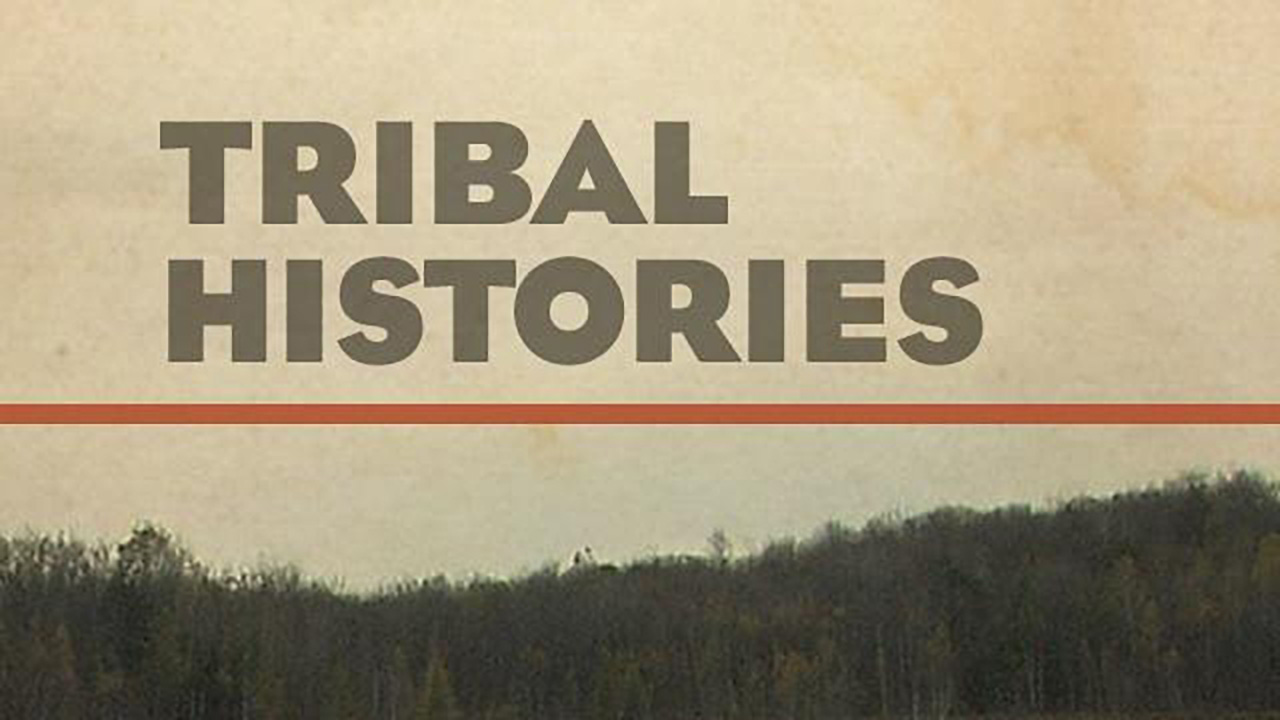
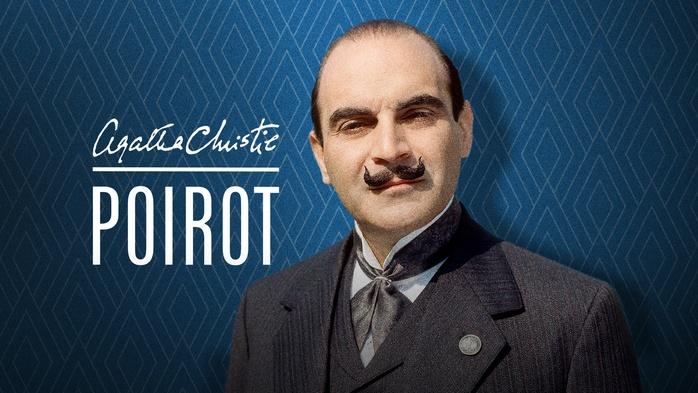




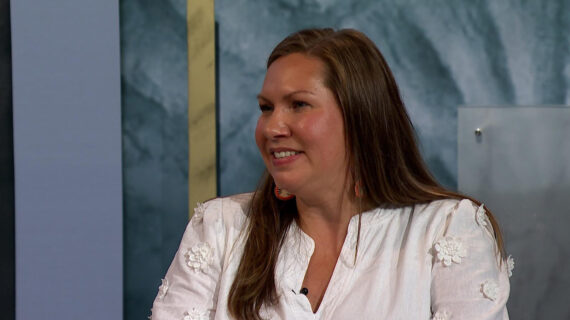
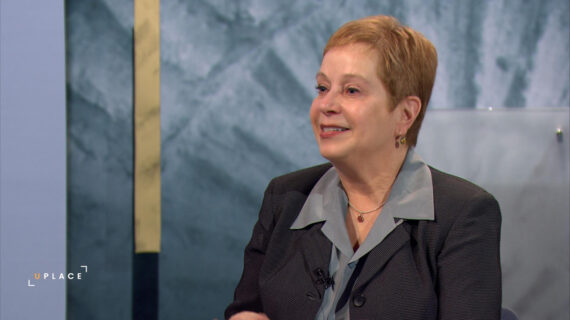
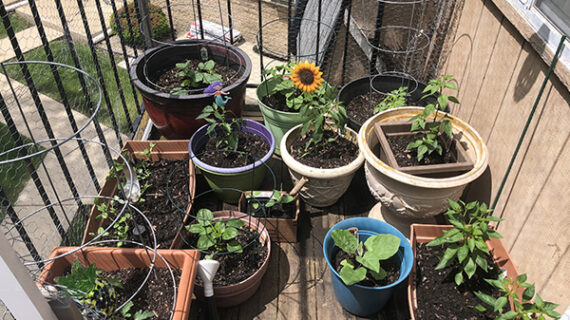
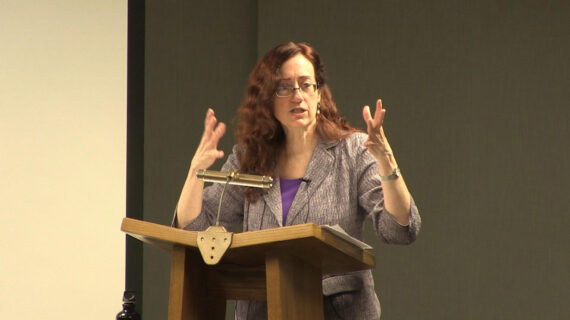
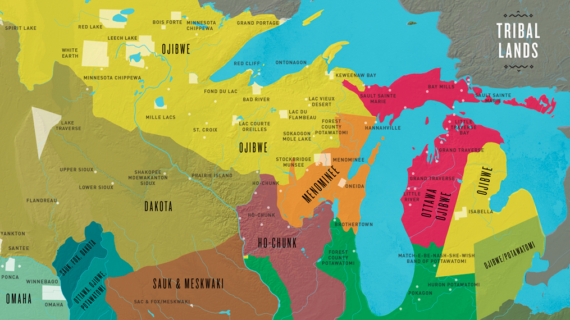
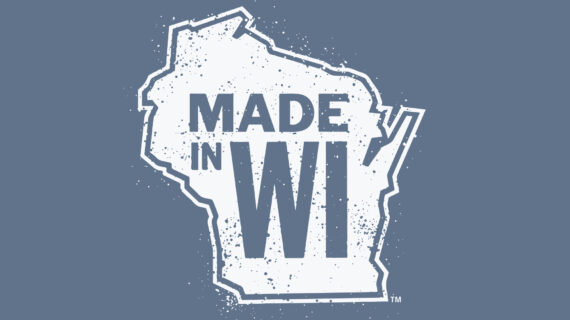

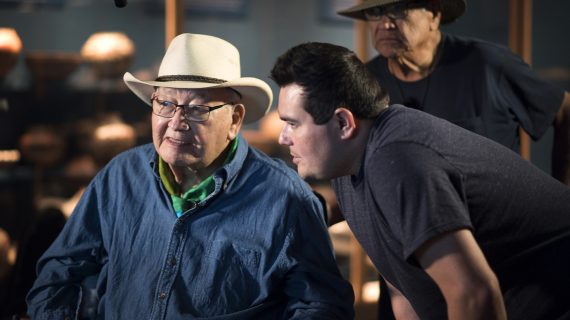


Follow Us